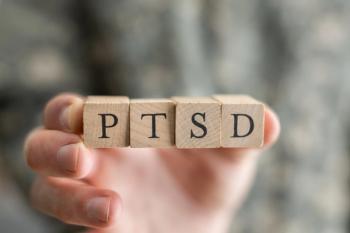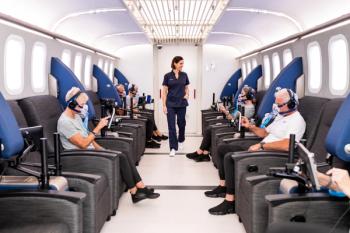
The Vietnam War’s Influence on Psychiatry
The PBS series on the Vietnam war has evoked a flood of memories, and reminds me how far we’ve come in our understanding of PTSD- and how far we still have to go.
I missed the initial episodes of the documentary series on the Vietnam War now airing on PBS. That must have been unconscious because I knew it was coming and intended to watch. Once I started to view it, it was clear why I'd missed the beginning. Episode 8-the one I first saw-began with an interview of a nurse who had served in Vietnam and it focused on the involvement of medics.
I quickly recalled the ethical dilemma and decision I faced while I was in medical school at Yale in 1969-at the height of the war, when no end was in sight. My fellow students and I were beginning to think about internship and residency, but the war was likely to foil our plans. I had these options:
1. Wait and do nothing and hope I wouldn’t be drafted to serve as a general physician
2. Try to obtain a conscientious objection (CO), which my lawyer father thought was likely
3. Apply for the Berry Plan, which would allow me to start and complete my residency training in psychiatry. I’d then owe the armed forces 2 to 3 years, starting in 1975.
The first option struck me as the worst. I had just married and, of course, didn’t want to leave Rusti and put myself in danger. Moreover, I wasn’t all that gung ho about being a general physician. I specifically wanted to be a psychiatrist.
Obtaining a CO seemed like the best option. I was against the Vietnam war and a CO wouldn’t interrupt my career trajectory. But ultimately, I decided not to pursue this route, and I opted for deferred service instead.
As the midnight deadline for applying for the Berry Plan approached, I started to feel anguish. Sure, I was against the Vietnam War, but certainly not all wars. How could I be so confident about the necessity to fight WWII, in which my father-in-law so ably served as a physician, and so against the fight in southeast Asia? When I recognized my differing views of war, I concluded that morally I could not be a CO. I completed the Berry Plan form and was accepted into the Army. After I completed my psychiatry residency in 1975, the Army sent us to Anniston, Alabama, where we lived from 1975 to 1977.
How could I be so confident about the necessity to fight WWII . . . and so against the fight in southeast Asia?
While there, I first encountered a clinical picture that puzzled me. The first such case, which I recall with eidetic clarity, was that of a black Sergeant whose chief complaint was trouble focusing on his tasks. He also described flashbacks to his service in Vietnam and the traumas he encountered there. He couldn’t sleep. He had startle responses, the opposite of the stoic presentation expected in his role.
I wasn’t sure how to diagnose or treat him or others like him. His symptoms seemed similar to those described as “shell shock” from prior wars, but that disorder wasn’t in our diagnostic manual. Not knowing what treatment might work, I sat and listened carefully. I tried to be empathetic. That seemed to help some.
Post-traumatic Stress Disorders Are Delineated
It soon became clear that many, many soldiers who had returned to the states were having similar difficulties. As the documentary series reminds us, the returning Vets were not welcomed by anti-war protestors, who often shouted obscenities at them.
How to help seemed to be a challenge for other psychiatrists, too. It just wasn’t my inexperience. “Rap groups” evolved, but mainly seemed supportive.
Organized psychiatry was stimulated to try to understand this phenomenon better. Finally, in 1980 we added Post-traumatic Stress Disorder (PTSD) to DSM-III. At that time PTSD was conceptualized as resulting from a catastrophic stressor outside the range of usual human experience. It seemed applicable not only to war, but to such events as torture, rape, and natural disasters. The cause was thought to be external rather than internal (neurotic) weakness--a distinction Freud struggled with in terms of childhood sexual abuse. There is, of course, some vulnerability (eg, genetic, personality trait, or history) that explains different outcomes of those exposed to similar trauma. We now know, too, that for some, moral injury may occur from doing things like killing for a questionable cause and that can contribute to the development of PTSD. Those with sociopathic traits may be less likely to feel a moral injury and thereby, ironically, may be protected from PTSD.
By the early 1980s, I knew what I was encountering when I saw Army Vets with PTSD.
Treatment advances were slow to come-and still need improvement. Various types of psychotherapy have been used. EMDR (Eye Movement Desensitization and Reprocessing) had some surprising applicability for some. And different medications help ameliorate particular symptoms. But there is no anti-trauma medication akin to antidepressants, antipsychotics,, and antianxiety drugs. Trauma-informed treatment remains a goal for all systems of care.
We are still trying to find the “Holy Grail" to prevent PTSD after a traumatic event. Having a useful diagnosis and some improved treatments has helped many. What we have learned about PTSD may be the high point of what psychiatry has accomplished since the Vietnam War.
We now also appreciate that some with PTSD experience post-traumatic growth….there are those who emerge stronger and more resilient. Key to such growth is having the necessary practical resources for recovery-a major challenge that we are seeing currently in, for example, post-Hurricane Puerto Rico-as well as some supportive and trusted loved ones. I know this is true from my own secondary trauma after treating many patients with PTSD as well as from my own primary traumatic experiences.
It now strikes me that potential positive repercussions really apply to all mental illness. Yes, we want to help to reduce symptoms desired by the patient. But don’t we also hope that our patients can also emerge with new strengths and important roles to play in society?
The same sort of challenges may exist for us in our epidemic of burn-out. May we all, patients and caregivers alike, successfully emerge from what Joseph Campbell called a “heroic journey.” Helping each other recover and become stronger is among the best we humans can offer after the inevitable traumas of life.
Newsletter
Receive trusted psychiatric news, expert analysis, and clinical insights — subscribe today to support your practice and your patients.

















